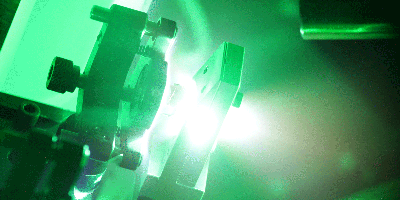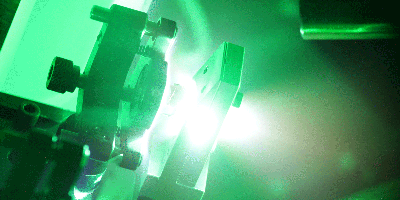Compact Neutron Source Takes First Picture
Energetic neutrons provide an important tool for studying the properties of materials. The most intense neutron sources are fission reactors and particle accelerators, but they are costly to build and research groups compete intensely for access. A cheaper and more portable alternative is to generate neutrons from the interaction of high-energy laser pulses with a solid target. Researchers at Los Alamos National Laboratory in New Mexico have now recorded the first radiograph with a laser-neutron source, a proof of principle marking the sources’ readiness for university labs.
Markus Roth of the Technical University of Darmstadt, Germany, and his colleagues used Los Alamos’ terawatt laser, TRIDENT, to generate neutrons in a two-step process. Short laser pulses strike a thin, deuterium-rich plastic target, accelerating electrons to high enough speeds to knock out a stream of deuterons. The deuterons travel 5 millimeters to a stout beryllium rod, where they undergo nuclear reactions that produce neutrons. The source itself is small enough to pack into a suitcase, while sufficiently powerful lasers could easily fit on a lab bench.
In previous sources, the neutrons emerged in a spherical cloud, instead of being more usefully collected into a forward-directed beam. The researchers discovered that plastic targets thinned to – nanometers gave the most directional beam, and to test it out, they took pictures of various metal and plastic objects placed in front of the neutron beam by recording their shadows in a neutron detector. The laser sources, which yield fewer neutrons than traditional sources, have yet to find their niche in applications, but Roth et al. say that testing neutron sensors and studying neutron-beam damage in materials are both possibilities. – Jessica Thomas





